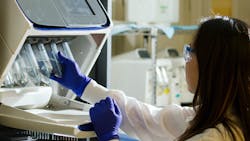The Centers for Disease Control and Prevention (CDC) recently announced that it is adding wastewater data to its COVID Data Tracker platform and is massively expanding its wastewater surveillance.
Since its launch in Sept. 2020, CDC’s National Wastewater Surveillance System (NEWS) has collected over 24,000 samples representing 53 million Americans. With its new addition to CDC’s COVID Data Tracker, visitors will be able to track the virus levels in an area’s wastewater over the previous 15 days.
Without the platform, comparing COVID data between states can be difficult to compare: many regions use different methods for their analysis. With NEWS's consistent methodology, and the Data Tracker’s existing features, users will now be able to compare wastewater data across states directly.
This nationalization of wastewater epidemiology has many benefits outside of the COVID-19 pandemic; wastewater surveillance is applicable to many different health concerns.
“We are right now working to expand the National Wastewater Surveillance platform to use this to gather data on other pathogens,” said Amy Kirby, team lead for NEWS, in a telebriefing. “We expect that work to commence by the end of this year. Our targets include antibiotic resistance, foodborne infections — like E. Coli, salmonella, norivirus — influenza, and the emerging fungal pathogen, Candia Auris.”
This wastewater data will only be available for participating areas. Currently, NEWS surveys 37 states, four cities, and two territories through its 400 active testing sites. However, CDC also announced that hundreds more testing sites will begin submitting wastewater data within a few months.
The new testing sites come as part of a commercial testing contract, which will help provide twice-weekly testing to 500 additional sites nationwide within a few months. CDC plans to add data from at least 250 sites within only a few weeks.
“One of the strengths of wastewater surveillance is that it is very flexible,” said Kirby. “Once we have built this infrastructure . . . We can add tests for new pathogens fairly quickly.”
About the Author
Jeremy Wolfe
Jeremy Wolfe is a former Editor for WaterWorld magazine.

